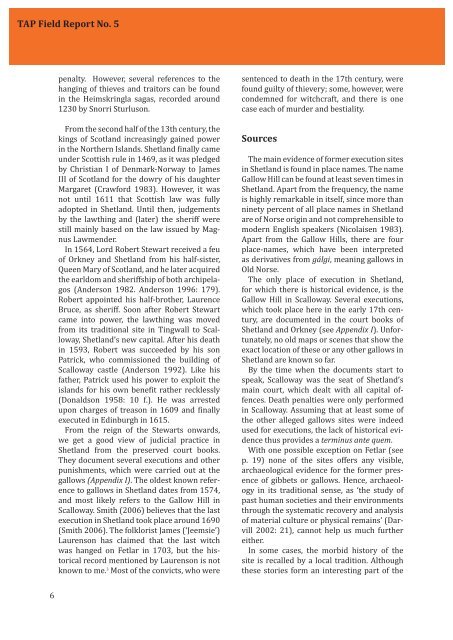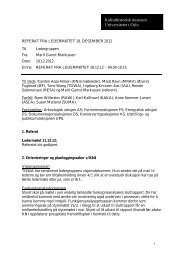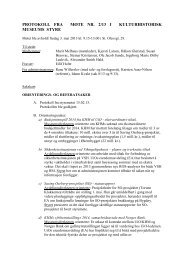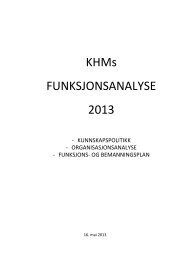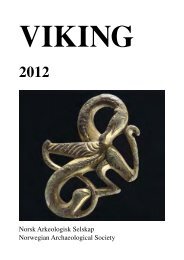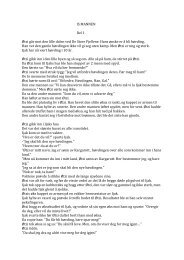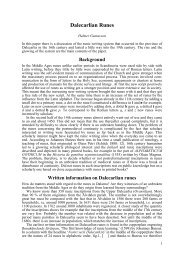TAP Field Report No. 5 A survey of Shetland's gallow hills Joris ...
TAP Field Report No. 5 A survey of Shetland's gallow hills Joris ...
TAP Field Report No. 5 A survey of Shetland's gallow hills Joris ...
- No tags were found...
Create successful ePaper yourself
Turn your PDF publications into a flip-book with our unique Google optimized e-Paper software.
<strong>TAP</strong> <strong>Field</strong> <strong>Report</strong> <strong>No</strong>. 5penalty. However, several references to thehanging <strong>of</strong> thieves and traitors can be foundin the Heimskringla sagas, recorded around1230 by Snorri Sturluson.From the second half <strong>of</strong> the 13th century, thekings <strong>of</strong> Scotland increasingly gained powerin the <strong>No</strong>rthern Islands. Shetland inally cameunder Scottish rule in 1469, as it was pledgedby Christian I <strong>of</strong> Denmark-<strong>No</strong>rway to JamesIII <strong>of</strong> Scotland for the dowry <strong>of</strong> his daughterMargaret (Crawford 1983). However, it wasnot until 1611 that Scottish law was fullyadopted in Shetland. Until then, judgementsby the lawthing and (later) the sheriff werestill mainly based on the law issued by MagnusLawmender.In 1564, Lord Robert Stewart received a feu<strong>of</strong> Orkney and Shetland from his half-sister,Queen Mary <strong>of</strong> Scotland, and he later acquiredthe earldom and sheriffship <strong>of</strong> both archipelagos(Anderson 1982. Anderson 1996: 179).Robert appointed his half-brother, LaurenceBruce, as sheriff. Soon after Robert Stewartcame into power, the lawthing was movedfrom its traditional site in Tingwall to Scalloway,Shetland’s new capital. After his deathin 1593, Robert was succeeded by his sonPatrick, who commissioned the building <strong>of</strong>Scalloway castle (Anderson 1992). Like hisfather, Patrick used his power to exploit theislands for his own beneit rather recklessly(Donaldson 1958: 10 f.). He was arrestedupon charges <strong>of</strong> treason in 1609 and inallyexecuted in Edinburgh in 1615.From the reign <strong>of</strong> the Stewarts onwards,we get a good view <strong>of</strong> judicial practice inShetland from the preserved court books.They document several executions and otherpunishments, which were carried out at the<strong>gallow</strong>s (Appendix I). The oldest known referenceto <strong>gallow</strong>s in Shetland dates from 1574,and most likely refers to the Gallow Hill inScalloway. Smith (2006) believes that the lastexecution in Shetland took place around 1690(Smith 2006). The folklorist James (‘Jeemsie’)Laurenson has claimed that the last witchwas hanged on Fetlar in 1703, but the historicalrecord mentioned by Laurenson is notknown to me. 3 Most <strong>of</strong> the convicts, who weresentenced to death in the 17th century, werefound guilty <strong>of</strong> thievery; some, however, werecondemned for witchcraft, and there is onecase each <strong>of</strong> murder and bestiality.SourcesThe main evidence <strong>of</strong> former execution sitesin Shetland is found in place names. The nameGallow Hill can be found at least seven times inShetland. Apart from the frequency, the nameis highly remarkable in itself, since more thanninety percent <strong>of</strong> all place names in Shetlandare <strong>of</strong> <strong>No</strong>rse origin and not comprehensible tomodern English speakers (Nicolaisen 1983).Apart from the Gallow Hills, there are fourplace-names, which have been interpretedas derivatives from gálgi, meaning <strong>gallow</strong>s inOld <strong>No</strong>rse.The only place <strong>of</strong> execution in Shetland,for which there is historical evidence, is theGallow Hill in Scalloway. Several executions,which took place here in the early 17th century,are documented in the court books <strong>of</strong>Shetland and Orkney (see Appendix I). Unfortunately,no old maps or scenes that show theexact location <strong>of</strong> these or any other <strong>gallow</strong>s inShetland are known so far.By the time when the documents start tospeak, Scalloway was the seat <strong>of</strong> Shetland’smain court, which dealt with all capital <strong>of</strong>fences.Death penalties were only performedin Scalloway. Assuming that at least some <strong>of</strong>the other alleged <strong>gallow</strong>s sites were indeedused for executions, the lack <strong>of</strong> historical evidencethus provides a terminus ante quem.With one possible exception on Fetlar (seep. 19) none <strong>of</strong> the sites <strong>of</strong>fers any visible,archaeological evidence for the former presence<strong>of</strong> gibbets or <strong>gallow</strong>s. Hence, archaeologyin its traditional sense, as ‘the study <strong>of</strong>past human societies and their environmentsthrough the systematic recovery and analysis<strong>of</strong> material culture or physical remains’ (Darvill2002: 21), cannot help us much furthereither.In some cases, the morbid history <strong>of</strong> thesite is recalled by a local tradition. Althoughthese stories form an interesting part <strong>of</strong> the6


